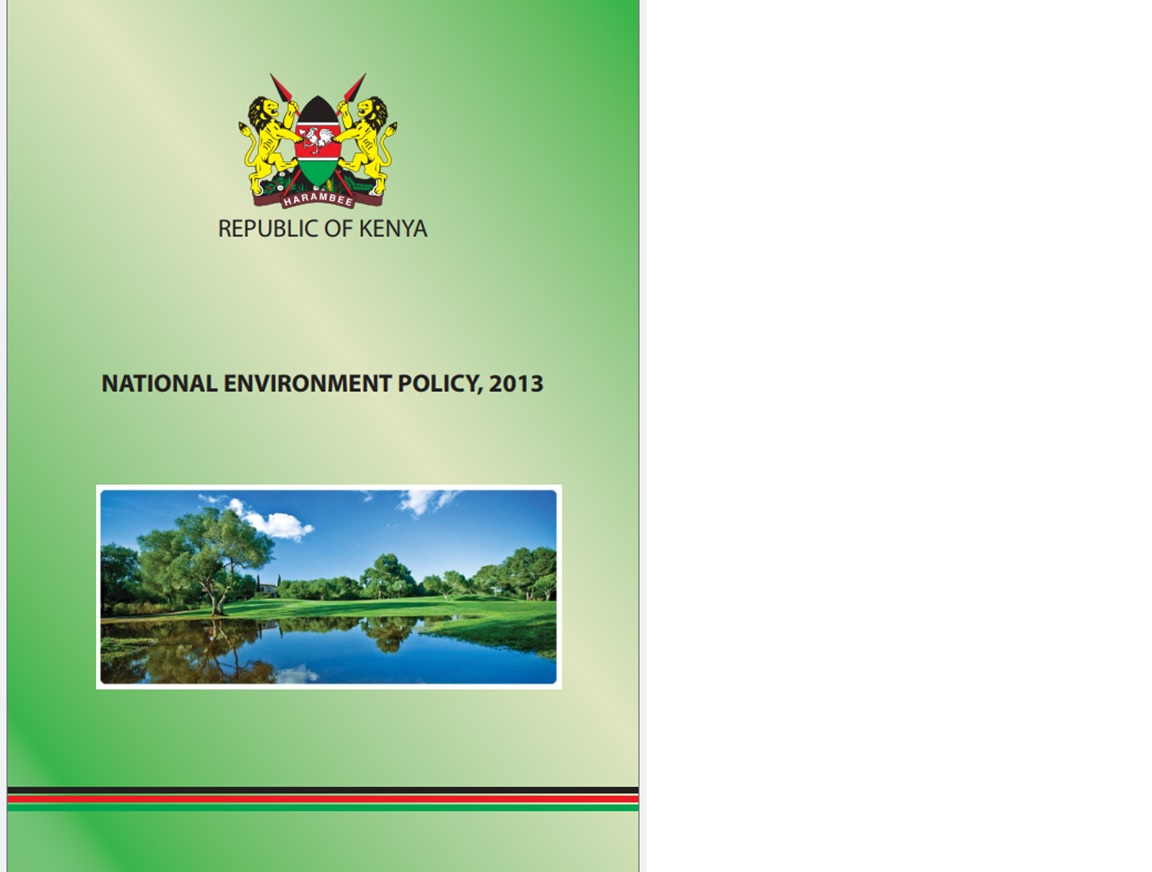National Environment Policy 2013
The objectives of this Policy are to:
(a) Provide a framework for an integrated approach to planning and sustainable management of Kenya’s environment and natural resources.
(b) Strengthen the legal and institutional framework for good governance, effective coordination and management of the environment and natural resources.
(c) Ensure sustainable management of the environment and natural resources, such as unique terrestrial and aquatic ecosystems, for national economic growth and improved livelihoods.
(d) Promote and support research and capacity development as well as use of innovative environmental management tools such as incentives, disincentives, total economic valuation, indicators of sustainable development, Strategic Environmental Assessments (SEAs), Environmental Impact Assessments (EIAs), Environmental Audits (EA) and Payment for Environmental Services (PES).
(e) Promote and enhance cooperation, collaboration, synergy, partnerships and participation in the protection, conservation, sustainable management of the environment and natural resources.
(f) Ensure inclusion of cross-cutting and emerging issues such as poverty reduction, gender, disability, HIV&AIDS and other diseases in the management of the environment and natural resources.
(g) Promote domestication, coordination and maximisation of benefi t from Strategic Multilateral Environmental Agreements (MEAs)
CONSUMPTION AND PRODUCTION PATTERNS
Changing patterns of consumption and production through integration of environmental considerations in all sectors is a pre-requisite for sustainable development. Most production and consumption practices do not take into account the associated environmental costs. As a result, the benefi ts provided and accounted for by natural resources appear to be much smaller than actual.An integrated accounting system will ensure that environmental costs in production systems are considered. Unsustainable consumption and production practices have been growing, resulting in many of today’s environmental challenges. Environment-friendly technologies can yield enormous environmental benefi ts and lay the foundation for a green economy. There is a need to develop and apply methods and tools that serve to promote resource effi ciency in consumption and production patterns across sectors. To achieve a clean and healthy environment, unsustainable patterns of production and consumption should be discouraged and intensified awareness instituted.
The value of environmental resources is hardly reflected in pricing of marketed goods and services. Environmental and natural resources are largely considered as public goods. This is symptomatic of market failure. This policy ensures integrating environmental considerations into the behaviour of enterprises and consumers would reflect a change in consumption and production patterns. Prioritisation of environment and natural resources remains a top priority in this policy and encourages more public investment in the sector
The Government of Kenya continues to:
1. Provide economic incentives for investment in more efficient, clean and environment-fr iendly production technologies and associated capacity building.
2. Promote sound environmental management tools.
3. Promote corporate and social responsibility and accountability.
4. Promote public procurement policies that encourage development and diff usion of environmentally sound goods and services.
5. Promote, strengthen, support consumer organisations and create awareness.
6. Create awareness on environmental impact of using non-biodegradable materials such as plastics
Document and value natural capital and provide periodic assessments to support national accounting and planning.
7. Develop and apply instruments and methodologies for environmental accounting into the national accounting and planning processes.
8. Promote rational and sustainable use of natural capital to ensure intergenerational equity.
9. Promote existing and develop new incentives for the payment of the ecosystem services as a measure to secure and invest in the natural capital.
10. Develop a monitoring and reporting fr amework for a range of stakeholders to monitor their use of natural capital, periodically assess and cost degradation.
11. Enhance Natural Capital Value through enhanced conservation activities and capacity building.
12. Involve and empower communities in periodic assessments of natural capital.



